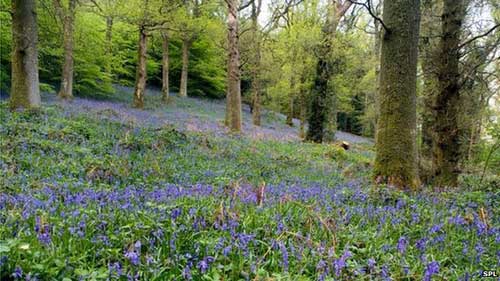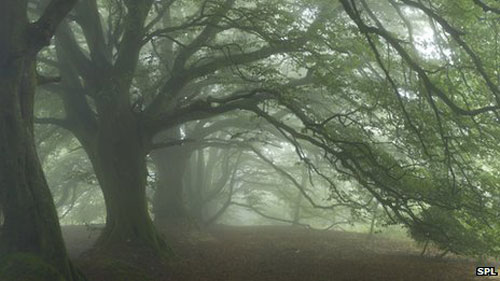|
Ancient woodland losses 'not accounted for',
say campaigners
The scale of ancient woodland being lost
to development in
The Woodland Trust says that systems are so poor, the
government cannot say how much ancient forest has disappeared in the last 10
years.
However, a new report from the Forestry Commission says
that the
They say the amount of forest has more than doubled in
the last 100 years.
Ancient woodland is defined as forests that have been
in existence since 1600.
These older trees only cover some 2% of the
While their numbers were first recorded in 1981 in the
Ancient Woodland Inventory, campaigners say it is an inadequate tool as it
does not count stands of trees smaller than two hectares.
The Woodland Trust says there is no adequate recording
of ancient forests lost as a result of development on either a local or a
national basis.
"If we ask the government how much ancient
woodland has been damaged or destroyed by development in the last 10 years,
they cannot tell us. The figures around the losses just don't seem to be
accounted for," the Trust's Austin Brady told BBC News.
"The reality is that planning decisions on ancient
woodland are giving consent for the destruction and removal because there is
considered to be a local need for that development."
Wrong type of forest
The trust says it is aware of at least 400 ancient
woods currently under threat in the
The government says that the current planning system
provides adequate protection for these ancient trees. A national planning
policy framework was introduced in 2012 that removed a default
"yes" to development in the guidelines.
The Forestry Commission has published new details about
the scale of tree cover across the
Some 13% of the
"Managing forests to provide these benefits is a
complex business which needs precise and up-to-date information," said
Wilma Harper from the Forestry Commission.
"The National Forest Inventory will be the most
accurate inventory of our forest resources we have ever produced, and provides
a great baseline to work from as we move forward."
But the Woodland Trust says that much of the increase
is in the "wrong type of forest", including many pine trees that
were planted in the 20th Century.
"Not all woodland is created equal; some of it is
non-native conifers, some of it is our most precious ancient woodland that
has been there for centuries," said Austin Brady. "You can't trade
one for the other."
A government spokesman told BBC News: "Strong
protections are in place for the Green Belt, ancient woodland, Areas of
Outstanding Natural Beauty and many other countryside and heritage treasures,
such as World Heritage Sites.
"The national planning framework also puts power
back into the hands of local people, ensuring they are in charge of deciding
the areas they wish to see developed and those to be protected."
BBC
|
Thứ Tư, 26 tháng 2, 2014
Đăng ký:
Đăng Nhận xét (Atom)


Không có nhận xét nào:
Đăng nhận xét